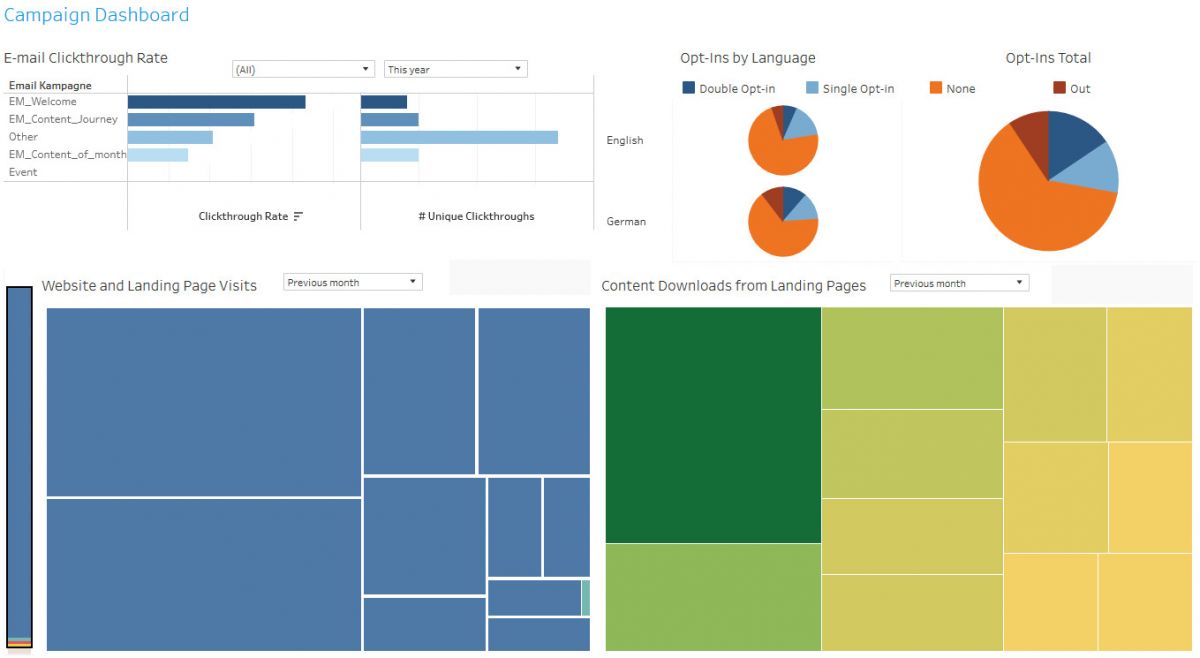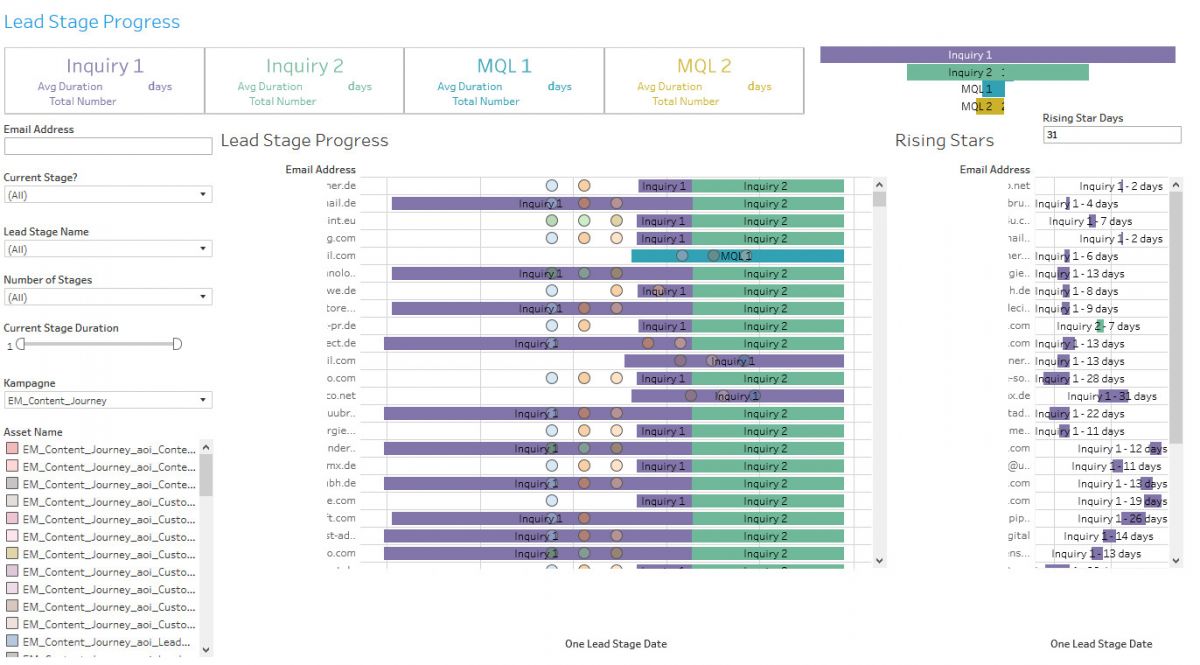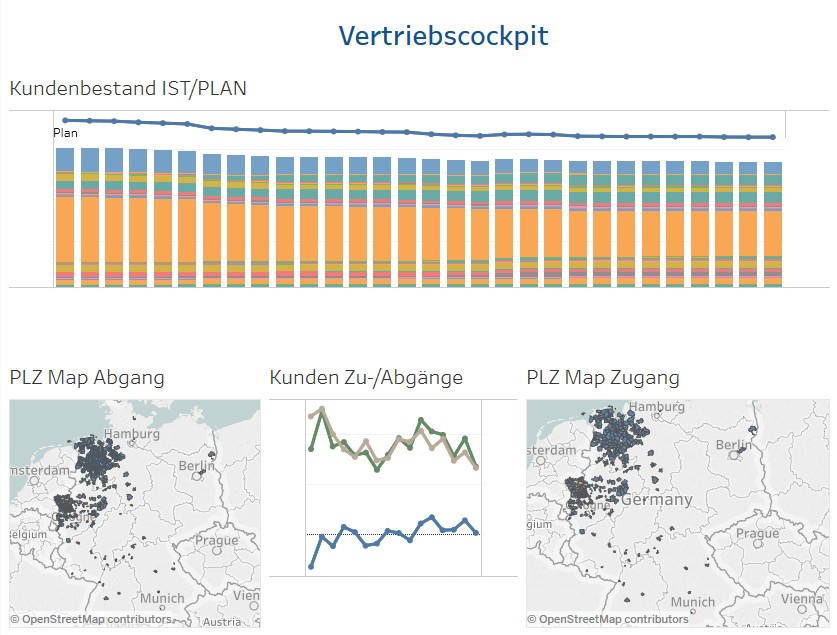90% time saving in data preparation
More turnover through additional distribution capacity
Greater flexibility for individual solutions
90% time savings through automatic data refreshes
Thomas Seßner, Chief Operations Officer of OAC, explains how OAC teams use Tableau to address typical challenges facing customers like: "Is the company efficient? Where are we right now? Are we on time? Is the product line as we deliver it the right one? Do we have to change anything? Can I still get a bonus?"
The good success of the Tableau projects has led to an unexpectedly high growth rate at OAC. Thomas Seßner reports, "because we really solve problems and don't just put systems on top of them, we've gained a much improved standing".
The visualizations and analyses created by OAC are made available to customers through Tableau Server. Particularly useful in customer projects is the ability to consolidate data sources from Excel spreadsheets, ERP solutions, andvarious web data sources such as weather information. "When mixing and integrating the data, the main benefit for the customer is that it saves a tremendous amount of time because he does not have to re-enter everything over and over again. This also means fewer errors". In customer surveys, OAC has found time savings of up to 90%.
OAC customers also experience the benefits of Tableau, Thomas Seßner explains, "For example, our main customer has saved over 180 Excel spreadsheets."

Monitoring email campaigns and opt-ins
When mixing and integrating the data, the main benefit for the customer is that it saves a tremendous amount of time, because he does not have to re-enter everything over and over again. Thus, the error rate is also significantly lower.
More growth through freed capacities
The time saved in data preparation and controlling could be used by the predominantly small and medium-sized companies for other tasks: "One of our customers has taken six employees out of the controlling department," reports Thomas Seßner. "They then went into sales and thus significantly increased revenue."
However, the attitudes of customers towards data have also changed significantly overall. "Employees work with data much more," explains Thomas Seßner. "Because comparing, entering or retrieving data has become so easy that it's fun. Today, with just a few clicks we can do things that used to take an hour or two."

Keeping an eye on the lead pipeline
The employees work much more with data because comparing, entering, and retrieving data has become so easy that it's just fun. Today, with just a few clicks, we can do things in minutes that used to take us one to two hours.
Data-driven alerts notify employees of weather pattern changes
OAC benefits from Tableau's flexibility in case of changes in customer solutions or new projects. Thomas Seßner says: "We want to go with the company, we want to find solutions for the company, even if it changes. And with Tableau, a change can be displayed very quickly and immediately visualized."
In the near future, OAC will make greater use of Tableau's alarm functions for its customer projects. "We want to introduce the early warning system by e-mail," explains Thomas Seßner. "If something goes wrong, employees should be informed automatically by e-mail. Or if, for example, it is clear from the weather data that there will soon be a lot of snow, all available employees for the winter road clearance service should be automatically assigned and also receive a message via WhatsApp."
Thomas Seßner believes that with Tableau, the company is well-positioned for the future: "I find the way in which problems are approached phenomenal. And I think that's the future, too. If I look at what Tableau can do now, I look forward to the next few years."

Tracking new customers and churn

